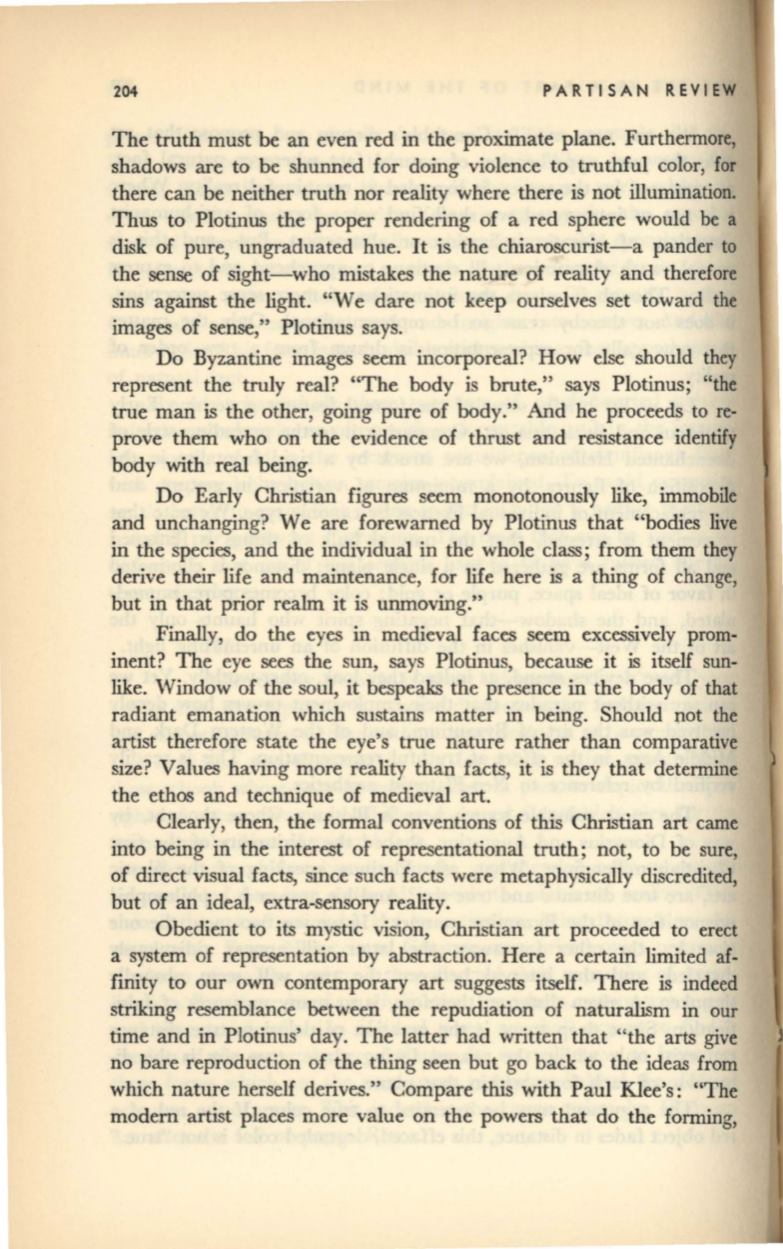
204
PARTISAN REVIEW
The truth must be an even red in the proximate plane. Furthermore,
shadows are to be shunned for doing violence to truthful color, for
there can be neither truth nor reality where there is not illumination.
Thus to Plotinus the proper rendering of a red sphere would be a
disk of pure, ungraduated hue.
It
is the chiaroscurist-a pander to
the sense of sight-who mistakes the nature of reality and therefore
sins against the light. "We dare not keep ourselves set toward the
images of sense," Plotinus says.
Do Byzantine images seem incorporeal? How else should they
represent the truly real? "The body is brute," says Plotinus; "the
true man is the other, going pure of body." And he proceeds to re–
prove them who on the evidence of thrust and resistance identify
body with real being.
Do Early Christian figures seem monotonously like, immobile
and unchanging? We are forewarned by Plotinus that "bodies live
in the species, and the individual in the whole class; from them they
derive their life and maintenance, for life here is a thing of change,
but in that prior realm it is unmoving."
Finally, do the eyes in medieval faces seem excessively prom–
inent? The eye sees the sun, says Plotinus, because it is itself sun–
like. Window of the soul, it bespeaks the presence in the body of that
radiant emanation which sustains matter in being. Should not the
artist therefore state the eye's true nature rather than comparative
size? Values having more reality than facts, it is they that determine
the ethos and technique of medieval
art.
Clearly, then, the formal conventions of this Christian art came
into being in the interest of representational truth; not, to be sure,
of direct visual facts, since such facts were metaphysically discredited,
but of an ideal, extra-sensory reality.
Obedient to its mystic vision, Christian art proceeded to erect
a system of representation by abstraction. Here a certain limited
af–
finity to our own contemporary art suggests itself. There is indeed
striking resemblance between the repudiation of naturalism in our
time and in Plotinus' day. The latter had written that "the arts give
no bare reproduction of the thing seen but go back to the ideas from
which nature herself derives." Compare this with Paul Klee's: "The
modern artist places more value on the powers that do the forming,


